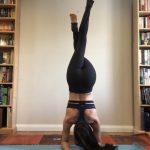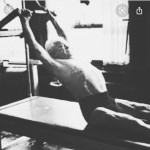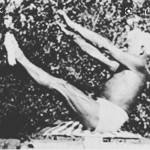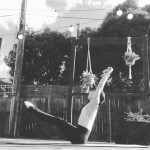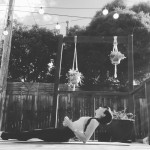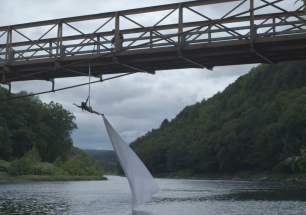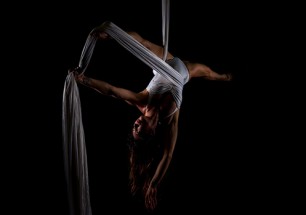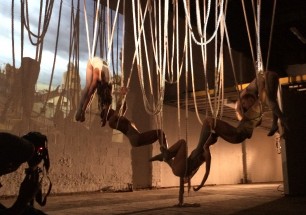WELLNESS BLOG
Three Easy Ways to Get your Weekly Greens!!!
February 10, 2021
KILLER KALE SALAD * SPICY CELERY SOUP * BAKED VEGGIE RISOTTO
Always buying a packaged salad or veggie entrée because you don’t have time or desire to cook vegetables? Or worse – eating mainly carbs and protein because the whole grocery shopping-cooking thing is too much trouble? I totally feel your pain and this blog is for you.
Pre pandemic: I lived in the center of New York City. Everything I needed to eat was easily found within a 5-minute walk (not that I ever had the time to eat). I called the deli downstairs “my refrigerator”. The only staples I kept at home were a good extra-virgin olive oil, aged balsamic vinegar, rice, coconut oil and popcorn kernels. I could take Tupperware to the Indian restaurant down the street if I really wanted a crazy meal, but normally it was grilled protein and salad for dinner.
Post-pandemic: Eggs and 85% of the vegetables I eat come from the garden. Because I’m trying my very hardest to live plastic-free I cook more than I have ever cooked in my life. Needless to say, it doesn’t come naturally so I thought I would share my first revelation of how to prepare greens to last most of the week. All three recipes take 20 to 40 minutes, no major cooking skills, and last 3 to 5 days. I’m sure most of you already have this meals thing under control, but for those who are interested, here are my three favorite GREEN recipes!
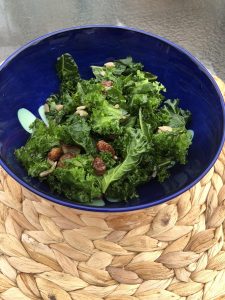 Massaged Kale Salad with Raisins and Sunflower Seeds:
Massaged Kale Salad with Raisins and Sunflower Seeds:
INGREDIENTS
1 large bunch of kale washed, stems removed, and ripped or cut into pieces
1/4 cup olive oil
2 Tablespoons fresh lemon juice
1 Tablespoon honey
1/2 teaspoon crushed red pepper
1 garlic clove, smashed with flat of butcher knife (fun)
pinch of sea salt and fresh ground black pepper
1/2 cup golden raisins
1/4 cup raw sunflower seeds
PREPARATION
In a small bowl whisk together the oil, lemon juice, honey, red pepper,salt, and pepper. Drop in the garlic and let sit for a few.
Wash, stem, and cut or tear kale. Throw (or place gently) into a large bowl.
Unless you are single and working remotely, take the garlic out of the sauce before drizzling the marinade over the kale and then massage the marinade into each leaf.
Mix in the raisins. Best if refrigerated for a couple of hours, but who has time for that. If the kale is too hard the first day, it will be the right consistency the next. Generally, if you did a good job massaging the leaves it should be fine after 15 minutes.
Top individual servings with sunflower seeds.
I also recommend alternating with pepitas, avocado, cucumber, red pepper, diced imo/Japanese sweet potato (different than the orange one) and apple.
The original recipe can be found at https://healthycancerchick.wordpress.com/2015/04/26/marinated-kale-salad-with-golden-raisins-and-sunflower-seeds/
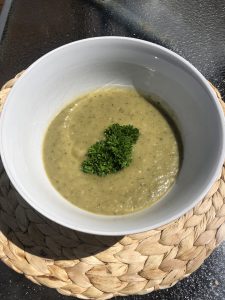 Spicy Celery and Potato Soup
Spicy Celery and Potato Soup
INGREDIENTS
2 tablespoons olive oil, or butter
1 onion, diced
4 fat garlic cloves, rough chopped
6 cups celery, sliced thinly (about 1 ¼-1 1/2 pounds)
2 cups potatoes, sliced into ½ inch thick rounds (get the kind with a thin skin you don’t need to peel)
4 cups vegetable or chicken broth
1 cup water
1 bay leaf (optional, remove before blending)
1 teaspoon salt
½ teaspoon pepper
1/8 teaspoon cayenne, add more to taste.
Optional but way tastier if you have:
¼ cup fresh dill (small stems ok)
½ cup fresh parsley (small stems ok)
Appx 1 cup Spinach or Swiss Chard or Whatever leafy green is around
PREPARATION
Chop onions, garlic, celery and potatoes.
Heat the oil in a big pot over medium high heat, and add the onion, stirring occasionally, letting the onions get golden, about 5 minutes.
When the onions are golden, add the garlic and stir 1-2 minutes, until fragrant. Add the celery, potatoes, broth, water, bay leaf, salt, pepper, and cayenne. The liquid should just cover the veggies. Cover, bring to a rolling boil, turn heat down and simmer gently until potatoes are tender, about 10 minutes.
Turn heat off, remove bay leaf.
Add the fresh herbs and just wilt them (don’t cook herbs or you lose the vibrant color!)
Using an immersion blender blend until very silky smooth – OR if using a regular blender, let cool a little before blending in smaller batches. ( If blending warm soup, fill blender no more than halfway full, cover tightly with a lid and kitchen towel, holding it down firmly, when you start the motor (on the lowest setting, working up gradually) to prevent a blender “explosion”).
Blend well, a full minute, until herbs are fully blended, creating a vibrant colored soup. Garnish with dill or parsley and a few hemp seeds if you have. Stir in your choice of cashew cream, coconut yogurt, or some type of dairy like sour cream if you do dairy.
Original recipe can be found at https://www.feastingathome.com/celery-soup/
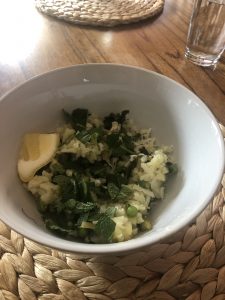 Baked Garden Veggies Risotto (I refuse to cook risotto on the stove top it never comes out right)
Baked Garden Veggies Risotto (I refuse to cook risotto on the stove top it never comes out right)
INGREDIENTS
2 tablespoons extra-virgin olive oil
½ cup finely chopped yellow onion
1 small garlic clove, minced
1 cup Arborio rice (about 7 ounces)
Sea salt and black pepper
4 oz green kale (about 1/3 bunch), stems separated and thinly sliced, leaves stacked and cut into ¼ thick ribbons (about 4 packed cups)
3 ½ cups low-sodium vegetable or chicken broth
4 oz baby spinach or swiss chard (about 4 packed cups)
1 cup frozen peas
¾ cup grated Parmesan, plus more for garneish
3 table spoons unsalted butter – I usually forget this and it still tastes awesome.
1 tablespoon lemon juice
1 Handful of mint leaves and a lemon slice for garnish (if you have them on hand) taks this BEYOND.
PREPARATION
1. Heat oven to 375 degrees. In a large Dutch oven, heat oil over medium. Add onion and cook, stirring occasionally, until softened, about 3 minutes. Add garlic and stir until fragrant, 1 minute. Add rice, season with salt and pepper, and stir until coated in oil and lightly toasted, 2 minutes.
2. Add kale, season with salt and pepper, and stir until wilted, 30 seconds. Add broth and bring to a boil over high heat.
3. Cover and bake until almost all of the liquid is absorbed and rice is tender, about 20 minutes.
4. Stir in spinach and peas until spinach is wilted. Add Parmesan, butter and lemon juice, and stir until well blended and saucy. (Liquid will continue to absorb as risotto sits.) Season with salt and pepper. Serve in bowls and top with more Parmesan (and mint and lemon for BEYOND).
Original recipe can be found at https://cooking.nytimes.com/recipes/1021287-baked-risotto-with-greens-and-peas?
November 17, 2020
Online Movement Training: Is Touch gone forever?
I just learned today that Cirque du Soleil is starting a new online training program called CIRQO! They have incredible acrobats teaching, including the legendary trapezist Aurelia Cats. I am SO EXCITED to see what they create. It is even more incredible because this is the first time EVER in history that people will be learning movement this way.
It made me realize that 2020 is not only the first time kids will be learning academics online. — They are also learning dance and movement online for the first time. I should have realized this as TicTok grew in popularity, but it’s only dawning on me now.
When I think back to all my years of training and guidance from various coaches as a kid – I was always lead through touch. On swinging trapeze with Elena Panova at SF Circus Space I always wore a harness. I can’t imagine learning a handstand press or various skills – even on static trapeze – without expert hands with generations of training – spotting, guiding, holding, pulling, sometimes pushing or even forcing me against my will into positions I was unsure in executing. Young Balinese dancers learn with a teacher or more experienced dancers standing immediately behind, guiding the student’s hips and limbs with their bodies and hands. In high school during rhythmic gymnastics flexibility training I remember a day when my coach held my shoulders and arms in the correct chest stand position while one teammate sat on a foot and the other pulled my leg well in front of my head in the splits. How would you make yourself do this for the first time with no assistance? Or at Circus Smirkus Coach Volodia/Vladmir with his handstand palettes pulling me from pike to handstand an extra three times after I was completely exhausted. Or his wife Zinadia sweetly saying, “This might hurt a little” while I knelt on one knee with her standing behind, arms wrapped around her while she pushed against my hips and pulled my leg towards my chest to stretch my flexors and hamstrings at the same time. These are the things that always helped me move forward. This of course, was before the internet became a thing.
Since the advent of smartphones, YouTube and Instagram, many aerial hopefuls began learning choreography (after learning basic technique in class) by watching videos, and have the added tool of being able to film themselves with their phones to clean up technique.
When I studied Pilates at Kane School New York, touch was an essential part of teaching. Kelly Kane taught “Touch” as its own separate chapter because it was so important. General Pilates teaching standards claimed that a good teacher gave exceptionally descriptive cues and gentle guiding hands, removing the need to demonstrate. Because I have a hearing disability, I wasn’t sure I completely agreed with the “no demonstration” policy as I am a very visual person to make up for the lack of hearing.
Can visual online instruction eventually replace touch completely? Micah Walters of Micah Walters Movement says, “I believe that humans possess a kind of kinesthetic empathy. By carefully watching another body move, we can imagine ourselves in their place, feeling what they feel. That’s why it’s satisfying to watch someone move with ease and uncomfortable to watch someone fight and struggle. As a teacher, this kinesthetic empathy is an important tool. It allows us to meet the student where they are, and guide them toward an improvement.”
A student of mine told me the story about his colleague’s twin daughters: they were born with Level 2 autism. One day she came home from work and was totally surprised to find them both balancing in handstands after seeing someone do it on television.
The field of online circus training has grown so quickly over the past seven months of Covid Self Isolation that En Piste, National Circus Arts Alliance of Montreal has started offering free (online) workshops for Circus Instructors to help improve online teaching skills.
As coaches in 2020, we have been recording more on video as well as coming up with more props and choreography to lead people into safer forms of movement and mobility than we were taught years ago.
I hope that the new generation of dancers and acrobats have reasonable expectations that allow for patient and safe learning, and are very PROUD of themselves, as you are the pioneers of a new method of movement training. I expect there will be much more room for fun and creativity rather than just pure tradition perhaps even more like the amazing prodigy, Lil Buck. –I can’t wait to see what emerges! The future is a very interesting place right now.
August 11, 2020
How to avoid shoulder and elbow injury when training aerial arts:
If you are 25 or under there is no need to read this. I doubt you will suffer any serious injury unless you fall. Everything is fairly uphill until age 26 when things start to deteriorate ever so slightly….
In 25 years I never suffered from a serious shoulder injury, mainly because I relied on my shoulders for my income and was very protective of them.
I’m starting to notice people back in the air after a four-month break from training.
There are more online aerial classes happening with no spotter present and even apps teaching skills and choreography. The world is changing and with it so will aerial arts methods! It started with IG choreography posts and ballooned after Covid hit. I am not one to judge. Change is fine. I just thought this blog might come in handy as I see a lot of mysticism and fancy “new” exercises – that have been around for a while by the way – to free shoulders.
I know people like fancy new techniques with some type of rebranding attached so they stand out on Instagram, but the way the human body functions hasn’t actually changed THAT much over the years. Functional mobility is functional mobility.
Here is my #simple advice on how to avoid injury to shoulders elbows and tendons. You can take it or leave it:
- Know yourself. Be aware of your current level of fitness.
-
-
How long have you been training aerial for? How long has it been since you last trained?
Are you really ready to learn that choreo you saw on IG?Be aware that an extra 5 or 10 pounds gained while taking a break from training is a new 5 or 10 pounds for your tendons and joints to carry in the air and be gentle on yourself.
-
-
- Know your instructor. How much experience do they have?
-
-
How long have they been teaching? Do you feel they are confident when spotting you? Are they big enough to spot you safely? Aerial Teaching Certifications are a relatively new thing and on their own don’t make a coach.
When you don’t feel confident doing a skill or combination do you feel comfortable enough with the instructor to tell them?
-
-
- Get your Back Involved:
-
-
Lower traps
Rhomboids
Serratus Anterior – These cats all help with scapular stabilization which in turn will decrease the amount of stress to the shoulder and rotator cuff.
-
-
- Train Shoulder Flexibility at the same time you train Shoulder Strength
-
Make sure you have enough range of motion to complete a skill with proper mechanics.
-
- Scheduled Rest
Allow time for muscle recovery after heavy training sessions.
I look to pitching coaches and gymnastic coaches for warmups and rotator strengthening exercises. Machine Pilates, rowing and snake on the reformer, arm spring exercises on Cadillac or Tower are my constant saviors.
While self-isolating I believe I probably gained 5 to 10 pounds because I was enjoying cooking and eating with my partner so much. I don’t regret it a bit. However, I am taking it easy until I either get back to the weight my joints are used to, or at least give my joints and tendons time to get used to the extra weight. This will help more than all the hydration and supplements in the world ever will. On that note – drinking dehydrates the body, connective fascia, and tendons. If you have been drinking more alcohol than usual during lockdown, cut back again.
You might want to check in with your body and reassess your current abilities before diving straight into 20 pullups, 60 beats, straight arm inversions, one arm rollups, and a bunch of planches after being in lockdown for a couple of months. Maybe you have been diligent with the pullup bar classes – maybe you haven’t. Either way, climbing is a different ballgame.
Three biggest arm concerns in my mind: Shoulder Joint (or Glenohumeral Joint if medical terms turn you on), Elbow joint (Humero-Ulnar, Humero-Radial and Radio-Ulnar), and Tendons that attach muscles to the bone. Then of course you can get into rotator cuff injuries and labral tears but I haven’t come across them as often just from aerial arts.
Regarding Elbow Tendonitis caused by repeated hanging, climbing and gripping:
The worst arm issue I personally ever had was elbow tendonitis. I believe it started after I had taken a few weeks break and gained a few pounds. Moxa sticks from my acupuncturist offered some relief, but it was still incredibly painful, and I was forced to work through it because of upcoming shows. The cure however, was easier than I imagined!
I added more opposite movements to my training program like pushups and overhead press exercises such as a timed handstand against the wall; forced myself to stretch my shoulders and forearms in a backbend after every training session and rehearsal because tight forearms put more stress on the shoulders and elbows; And when I slept at night I would put a weight or brace on my hand to make sure I wasn’t gripping in my sleep. And sometimes for kicks, because I was always hanging from a rope with my thumbs up, I would hang from a rope thumbs down – a tip I learned from a pro-arm-wrestler. (It’s really hard! – don’t hang full weight the first time)
Regarding Shoulders: My biggest tip is to always work flexibility at the same time as strength to make sure you have enough range of motion to complete a skill with proper mechanics. If you are cheating your way through, it will only last for so long. Always baby your shoulders, don’t punish them. Remember your life depends on them.
Solo aerial straps, one arm rollups, and power movements in the air all became popular when I was over 40. Despite wanting to do what all the kids were doing, I decided it would be better to be able to continue my aerial performance and training.
And when I did occasionally decide to add new skills to my repertoire, I would look for teachers who had years of experience teaching and spotting, not just performers who taught on the side. People like Victor in Montreal, Aloysia at Cirque School LA, Ivo in CA, Elena at Circus Center SF or other coaches that learned from them like Matt at Circus Warehouse. I realize there are many more, these are only a few examples of long-time aerial coaches with an athletic background that I would put my trust in. Just look for someone that has done their time.
I hope this demystifies the shoulder a little bit and helps you to avoid injury while in the air. In my opinion the only reason to make it any more complicated is in order to sell you something. A little common sense, a bit of mindfulness when moving, a good warm up and a stretch at the end go a long way.
July 28, 2020
Why I chose Aerial arts as a Career and how I became one. PART III : THE LONG ANSWER
This is Part III of a very long blog. If you haven’t read Part I: Definition of Aerial Arts and Part II the beginning of this blog – I would recommend doing that now. If you are only interested in my circus training background, please go to the main menu and navigate to the page “EQ P2Artist’s Statement”.
PREFACE:
As I don’t know when you are reading this, I will frame this blog by mentioning that it is the summer of 2020 during the time of Trump’s presidency, Covid 19, the murders of George Floyd and Breonna Taylor which have incited Protests and Riots across America; #BlacklivesMatter is being sung from voices all across the world. Tesla sent live astronauts into space. Monuments to hate are being torn down. Democracy is being challenged in Portland. Facebook is finally facing scrutiny for all the incendiary posts and propaganda they have allowed out. Although we are in a recession, Stocks are Up! America looks like a huge shit-show from the outside looking in.
Although it seems slightly meaningless to blog about my career now when many other more serious things are at hand, theaters around the world are threatened with bankruptcy and the hashtag #savethearts has shown up and compelled me to action.
The current state of affairs in the US prompted me to think about my time at IRC again – my need to attack the disease, not only the symptoms, and why I transitioned into the arts. Communicating through art and teaching cultural studies as early as possible is essential to people respecting one another.
I am elated that new policies for police are being passed and change is being sought after by some companies and organizations in the US and monuments to racism are being taken down. I’m proud of my cousin who as a mathematician has started tallying actual numbers proving how lacking of inclusion we are as a society with his organization, The Institute for the Quantitative Study of Inclusion, Diversity and Equity. For the first time, I feel hopeful that this is the generation that will bring actual change in the U.S. However, as an artist, I still believe America doesn’t just need new policies to combat police brutality and racism, we need a completely new education system that teaches culture and cultural appreciation from kindergarten on through senior year. We need to value art and culture more as a country. Racism will never go away until people accept differences and learn to love them even if we never completely understand them. Art is a pure form of communication that transcends language. Culture transcends language.
The US has to greatly expand cultural education in schools in order to promote peace and overcome racism. Not just another policy to control the hatred that has already been unleashed and now needs an emergency stop button. I enjoy looking toward Australia and how they have begun making changes despite many challenges trying to undo years of racism and suppression with their indigenous people. One of the most effective changes in my mind, is that Aboriginal history, culture, music and language are now being taught in public schools. Aboriginal Art is featured in every museum. Their spirit is starting to be felt and loved. Regret for the past is being felt and addressed.
I feel the need to say something about the times since people are currently saying only white voices are heard. I am female – I’m not so sure female voices are heard, but I’ll attempt a few words. Machiavelli was already banished by the Medici when he wrote The Prince in 1513 – nobody cared what he had to say until he was dead and yet he still went ahead and made lots of pamphlets to distribute so I’ll put in my two cents….. (Does anyone still use that expression? It seems kind of cheap…)
If you are still reading, I guess you are interested or at least seeking distraction. And what else is a website for but to voice your opinion to the universe, whoever may be listening? So here goes –
WHY I BECAME AN AERIAL ARTIST – THE LONG ANSWER:
A word of warning: Gawker Online Magazine once described me as “The Overly-Philosophical Acrobat”. It was pretty spot on.
In 1992 there was only one circus school in the US. To learn aerial arts in New York City you had to be lucky enough to meet a Florida circus family or a travelling Eastern European who was willing to share their family’s tradition. Or maybe you would be hired for a job and the performance company would teach you their choreography.
It was the wild west – you created your own style and path. Way before Youtube and Instagram – you had to see a performance or buy a rare video tape to create anything that wasn’t original. We were manifesting something from nothing – every artist’s dream.
It was all done at your own risk. Mats during training were a luxury.
Why would I – someone with many options – choose such an unpractical and dangerous path? I’ve asked myself many times, and my family and friends have asked me even more times. I’ve discussed it with other aerialists from my generation many times. In psychology, according to “Terror Management Theory”, a large part of human behavior is generated by unconscious fear of death. Mine was definitely a conscious fear and I chose to face it head on. It reminded me to make the most of every day – grateful for every minute. Facing death on a daily basis can be positive because it makes life more real, time more present, and attachments to material items become less important. Facing death on a daily basis from a negative standpoint also takes away the responsibilities of planning for the future. Working for a human rights organization during the time of genocide against the Tutsi in Rwanda and Serbs in Croatia – constantly hearing and thinking about what others were going through – just added fuel to my fire.
I come from a mixed religion and mixed class background. My father the oldest son of a successful Jewish Publishing family in Chicago and my mother the oldest daughter of an Episcopal dairy farming family in Salmon, Idaho.
When you aren’t sure where you belong, you search for your own special place to call your own and this (at the time) very empty circus ring seemed like the perfect undefined space to expand in.
After the inevitable divorce of my parents, I was promptly baptized and told that I would never be accepted by my Jewish family because they trace lineage through the mother. To my mother’s credit she also shared a couple of things she admired about Judaism: the music and the mysticism of Kabbalah.
My first lesson – even if you hate an individual, you can love their culture and artistic creations.
I had barely turned three when my mother moved us out to Arizona, away from both families in order for her to get her degree in Interior Design.
From then on it was a yearly tour. During summer vacation I would be flown out of our crappy little Tucson apartment to see my father in Chicago who was by that time an Honorary Consulate to Costa Rica and living on the 63rd floor of the Hancock building. I would be given a page-boy haircut from his guy Gil Ferrer, dressed in some sort of comic velvet outfit with patent shoes, taken on shopping trips, to various museums, concerts and ballets.
Mid-summer I was flown back to Arizona where my grandparents from Idaho would pick me up in their station wagon, tell me I was spoiled and that had a big nose – the velvet and patent discarded for jeans and sneakers — to drive me through the Rockies to Idaho where I would be taken camping, fishing and to the rodeo. A love of the western United States was instilled in me with each trip through the Rockies. My uncle was a logger and ranch keeper. He would fly his airplane into the back country of Idaho to take care of vacation properties or drive his trucks into the mountain to clear trees that were becoming a fire hazard. All of my mother’s cousins were blue collar workers and smoke jumpers except for one odd-ball astro-physicist who was dubbed the “lazy daydreamer”. All of them very close to the land and proud to be “pioneer stock”.
As summer came to a close it was back again to Tucson and mom dragging me to design classes or building sites, pow wows, ruins of the lost Anasazi, Paolo Soleri’s Arcosanti and Taliesin’s House of the Future.
The confusion of the social differences was a bummer as a kid. I mention these experiences now, because like everyone I am reassessing my social/racial E.Q. and I honestly feel that every step of my former education/life experience informs every single movement I make in the air.
At that time the only people of color in Arizona played on the Phoenix Suns basketball team and I was pretty sure I was the only half-Jewish person in the entire state. I kept my head down most of the time hoping people wouldn’t notice in church.
By middle school I received a scholarship to an international boarding school in Paradise Valley and for the first time felt comfortable in my skin as I was surrounded by foreigners and LA movie Industry refugees. Suddenly I met kids from LA who proudly wore Jewish star necklaces! I didn’t have to hide. My best friends were Thai, Japanese and South African.
That lead me to adventure further, and Junior year I pursued an exchange program in Lyon, France where for the first time in my life I experienced family dinners, family hikes, family discussions after “Apostrophes”, dance festivals, and Jazz Festivals. It was a beautiful, ideal lifestyle that was completely alien to my teenage American brain.
My mother died of lymphoma while I was in France. Flown back to my father one last time – on a Concorde flight full of chain-smoking Russian ballet dancers on their way to a tour, choking the entire 4-hour flight.
The last year and a half of high school ended at the United Nations High School in New York City because The UN School was the only school in New York City that would take a student mid semester. The students and faculty were from all over the world. My chemistry teacher had the most outrageous and beautiful Egyptian accent. One of my first friends was a beautiful Iranian girl whose family came to the US as refugees when the Shaw of Iran was overthrown. School in New York City brought new and varied experiences of art and class: from punk shows at CBGBs to coming out to society parties at The Palace to hanging out in art lofts in Brooklyn that were not easy or safe to get to back then. The beauty of the school was that it was partially funded by the U.N. and brought all our colors – rich or poor – together under one roof and we celebrated our differences. It was a safe place to discuss our various lives and learn from one another.
Venturing out even further for the first year of college, I left for Tokyo, Japan to study foreign relations at Sophia University. Once again I was surrounded by people who didn’t look like me and didn’t think like me. By now I was used to it. Helped a lot when learning the language, but didn’t help with my studies and I dropped out finishing my degree as a Jazz Music performance major at The New School for Social Research: a university founded by holocaust survivors and world renowned for social education.
At The New School the literature classes for jazz students were entirely French and German Existentialism – just to put our young impressionable heads in the right state of mind – and the music courses were taught by a 90% male, African American faculty that had learned jazz on the streets and paid high dues to survive and make it in the music world. Reggie Workman – a bassist for Coltrane – was one of the department heads and one of my favorite ensemble teachers, Chico Hamilton taught rhythm and improv, Macanda MacIntyre taught ensemble and improv – the staff and guest faculty was full roster of amazing talent who had played with musicians across the spectrum from the Be Bop scene, to World Music, and “Out” Jazz like Albert Ayler or Sun Ra’s Arkestra.
They seemed proud, or maybe bitter, — or maybe a cocktail of both feelings with different proportions depending on the individual — that what they struggled to create with their blood, sweat, heart, and soul could now be bought by young kids who thought they were entitled because they could pay tuition.
Whatever their feelings – the teachers, the greats – worked above and beyond from the bottom of their hearts – to do whatever it took to try and make us understand and pass the creative spirit of the music to us. I am so grateful to them and feel very lucky to have been taught by people from such different backgrounds than myself. I can’t understand why anyone would want a homogenous education from people exactly like oneself with exactly the same opinions.
Necessarily harsh at times to the point of what is now seen as “abuse” (** harsh criticism is a necessity for any artist to withstand in order to learn how to defend your creation), I remember being told once that although they could teach us “jazz”, in order to be true to form, we should create our own style and art movement that expressed our own time.
Hence, when I came upon aerial arts – a field that had no rules, lines or boundaries back then – I decided to jump in. It was a chance to create something new that spoke to my generation.
In 1992 there were a few traditional circuses formed by circus families, there was Ringling Bros and the Pickle Family Circus that had a few non-circus family outsiders, and Cirque du Soleil was touring Saltimbanco.
Rather than going to Florida or Montreal to chase down rare and difficult tour work, It was more appealing to me to take commissions from companies around the world which gave the opportunity to meet people outside of my field. Remember back then everything was world of mouth – no social media.
Each corporate event was in a different venue that had to be inspected and researched before designing and installing a piece. Every corporation had their own mission, goals and interest. Every job had new challenges, new people, new contracts, new ideas, new insurance policy.
I used to joke that I could predict a successful company or economy by who was hiring me and how extravagant the event was. When Azerbaijan paid off their debt to the World Bank, I performed at President Aliyev’s New Year’s Eve Extravaganza with a Turkish pop star. After Abu Dhabi paid off Dubai’s debt for the Burj Khalifa, I found myself performing in Abu Dhabi at a royal wedding. When Turkey’s economy was booming, suddenly aerialists from New York were sent over to Turkey. Shortly after came the flood of aerialists exported to China. Certain companies I worked for would hire me because they had extra money they needed to burn before tax time. Other companies hired me because things were looking dim, but they wanted to put on a good face for shareholders.
2006 was the most lucrative year ever – 2008 was pretty dim. 2001 after 9-11 was dead.
In the early 2000s some of my greatest supporters and inspirations were professional athletes and the hip-hop world. (Puff Daddy hired me/others for so many of his events). The hip hop and pro-athlete communities seemed like the only ones who understood all the work we put into the shows and how much effort it took physically and mentally. To this day I am still grateful for just that little bit of empathy they gave. One of my first press features was teaching an editor of Honey Magazine. (I don’t think this publication still exists but it was similar to Ebony, only for women). The premise of her article was to try anything even though you might fail, but I was unhappy that her formula was to end everything, every article with failure. She was so strong and talented but wouldn’t follow through to the end of the skill, no matter how much I encouraged her so she could continue her editorial formula. Today I wonder if she wanted to highlight her greatest strength as being perseverance to keep trying new things in a world with many walls.
And now it is 2020: Aerial Arts has come into its own and every millennial is not only familiar with Aerial Arts, they probably take it as a recreational class at their local gym in just about any small town or large city anywhere in the world.
I believe that New York City and California had a lot to do with spreading the aerial arts because of the money available for tours and events, and I’m very proud to have been one of the ones to pave the way and watch it grow. I might be slightly jealous of all the resources available now: youtube, IG, Facebook, THE INTERNET, apparatus makers, schools, gyms, teaching certifications, liability insurance choices!!! There are SO MANY MATS!!!! (But people fall more than ever before and there still isn’t a union.) Now a performer can put all their time into learning and practicing execution without worrying about creation and production.
Today there are many reasons to pursue Aerial Arts as a career. This essay is twenty years too late. Aerial arts remain one of the most inspiring of performing arts – everyone dreams of flying and performing arts matter more than ever now.
This is the story of my journey through arts and hopefully it helps to demonstrate that Arts and Culture are not just entertainment: It is proven that the Arts have a profound impact on human nature — spreading tolerance, increasing civic engagement and boosting the mental health of participants and viewers. According to Americans for the Arts, high-school students who have participated in the Arts are 40%more likely to have friends from different racial groups and 29%less likely to feel that it is “okay” to make a racist remark.
The Kennedy Center was one of my favorite places to perform because of the fantastic inscriptions from John F. Kennedy above the doors:
“I look forward to an America which will reward achievement in the Arts as we reward achievement in business and statecraft. I look forward to an America which will steadily raise the standards of artistic accomplishment and which will steadily enlarge cultural opportunities for all our citizens. And I look forward to an America which commands respect throughout the world not only for its strength but for its civilization as well.”
I still look forward to that America. Unfortunately, we killed this president.
Save the Arts and the Arts will save us in more ways than one.
July 8, 2020
Why I chose Aerial Arts as a career and how I became a professional Aerial Artist. PART II of III
THE SHORT ANSWER:
NOTE: If you are only interested in my circus training background, please go to the main menu and navigate to the page “EQ P2Artist’s Statement”.
After college, my first job in 1995 was at The International Rescue Committee, a non-governmental agency that sent assistance to countries in humanitarian crises. I was a very idealistic assistant in the Human Resources Department. It was during the time of the genocides in Rwanda and Croatia. People were getting machetes in the face, children were marching with guns, and hidden land mines were blowing limbs everywhere. I joyfully did a ton of filing while also creating a computer database, made sure employees had the right insurance, advance medical care, vaccines and visas for overseas. I spent a lot of time standing in line at embassies procuring visas as this was before the internet became a thing. I did everything I could to send fieldworkers out into the world to help. The fieldworkers would come back worn out and injured. As much as I admired IRC for helping and was proud to even be a very small part of what they did, after a couple of years I became bitter at the state of human rights and frustrated with only treating what I saw as the “symptoms”. (Note: Refugee Assistance Methods have since changed since 1995)
Taking a what I considered a dada-ist approach – seeing the ridiculous and unobtainable as the most crucial part of life and therefore the absurdity of existence to be the only truthful path, I quit and joined the circus to aim inspiration straight to the heart of humans to treat what I saw as the actual disease. Self-expression through art and culture was the only way to find love and respect with someone who looked, acted and thought differently than myself.
How did I become an Aerial Artist?
- I had already taken way too many ballet classes from the time I was 5 to 18
- While in college in New York I met a Ukrainian coach who worked with Big Apple Circus
- I had no parental guidance
- I was in my impressionable twenties, had a death wish, and was seeking attention
- After training for 3 months, my coach started booking me with her circus contacts (there weren’t many aerialists around in the early nineties)
To be continued in Part III “The long answer”……….
July 1, 2020
What is an Aerial Artist? Part I of III
What exactly is an aerial artist? Although it has grown into a full-grown trend, there are still many people who aren’t completely familiar with the term.
In the present day, even Yale has an aerial program and defines “Aerial Acrobatics” as any performance that takes place from a suspended apparatus such as a trapeze or a silk. I would add a little science to that by saying there is usually a fulcrum of some kind, and the artist must use gravity and momentum to create or control the movement of the apparatus. I see dance as incomparable to aerial arts because even though the aerial movement is usually choreographed and graceful like a dance, the threat of death is not always present whilst dancing on a stage, however it is always present when performing above the stage.
I once trained with a former Cirque du Soleil aerialist who had to retire because of terrible PTSD from the fright of her many shows: Every time she went upside down on the trapeze she would begin to scream uncontrollably. She could no longer demonstrate on the apparatus but was still a good coach. I feel the eminent danger is too easily forgotten when you describe aerial arts as dance.
Coming from the old days before there was a law about using a mat or safety device when performing above 20 feet in New York City, most performances were 15 to 30 feet off the ground. In my opinion a good aerial performance needs at least 10 feet of clearance under the performer’s feet or a lifting device to raise the performer from the ground to trim height or both. This requires a ceiling or trim height of at the very least, 18 feet.
The question of “What is an aerial artist?” is often followed by a statement about wanting to try pole dancing. Considering the definition of aerial arts – pole dancing is about as far opposite from aerial arts as you can get. The pole is not suspended above the stage. It does not move from a fulcrum and is not controlled by gravity or force. I respect the way pole dancing has grown over the last few years and there are some incredible pole dancers out there but I have never tried it myself.
This is Part I of a three part blog on why I became an aerial artist. To be continued…
May 30, 2020
Forearm Stand vs The Handstand
Handstands are a useful way to strengthen and stretch, and they balance out excessive hanging if you are a climber or aerial artist.
Forearm stands (or scorpion or Pincha Mayurasana in yoga) are also a useful way to strengthen the shoulder girdle, require more work on flexibility, and are safer in my opinion, because your head is only 2 or 3 inches off the ground.
If you are an enthusiastic handstand learner following an app or something while self-isolating at home, please consider learning a forearm stand first until you can be in a room with a coach to spot you.
These days people are mad about acroyoga, and handstands. This is fantastic!! — except that we are presently in lockdown at home and people are trying to do this without a coach present to spot and guide them.
I just paused to go to youtube and search “handstand fail” – as I thought there are many compilations trending.
Think about it: you’re home alone. Do you want to be upside down doing a handstand with your head almost 2 feet off the ground? You have two joints – elbow and shoulder –that can bend or collapse leading to a broken collarbone or worse.
–Pausing to google handstand broken collarbone –yup a few blogs.
When you do a forearm stand you might get a bump on your head if your muscles give but it’s doubtful you would be able to attempt a forearm stand without stretching and strengthening your arms properly anyway so it’s a win win situation.
When I started teaching machine pilates I became interested in combining the pilates choreography with a lot of hanging on the Cadillac, and handstands/grasshoppers on the barrel as a way to straighten s curves in the spine and increase shoulder flexibility. In fact, it became my obsession. Every time I saw tight shoulders and or an s curve I got super excited because I knew people would feel so much better after practicing. Now while working with people on zoom where I have no pilates machines or way to spot I’ve had to adjust. Handstanding is such a good way to strengthen the shoulders and core, but until someone is strong enough, it is a lot less daunting – as well as less-dangerous – to kick up to a forearm stand than a handstand.
In all fairness – I was never a gymnast by trade and never really desired to do a handstand, believing that forearm stands are way cooler. I have only been able to do a handstand press away from the wall for about 6 weeks of my life when I was training with Ivo Georgiev, a crazy but genius Romanian coach. I have been handstand-spotted by countless coaches in my lifetime, but when Ivo would spot me in a class, somehow I magically had the ability to handstand press on my own for a short time, but it would wear off after a week and I would have to go back again to recharge the power of spell or hypnosis or whatever you want to call it. Talk to Françoise of Hybrid Movement Company and she can tell you many Ivo stories….
***My favorite memory of a forearm-stand was at a Jivamukti Yoga class that Sharon was teaching back at their old 2nd Avenue studio. It was warm. We were all in forearm stands next to the wall. I felt both my feet comfortably resting on my head, took a deep breath, looked over and smiled to my right where Willam Defoe was sweating in a sexy way, feet on the wall, and perhaps struggling a bit trying to hold the position. It was the best memory I have of a yoga class. Thinking nothing would ever top it I didn’t return to yoga class for years after. ***
Sorry for the self-indulgent digression; In closing, please kids – Don’t handstand by yourself unless you absolutely know what you are doing. Stretch your shoulders until you can do a forearm stand first. And be wary of any app that says it can teach you to do a handstand just from watching their videos on your iphone.
With love from Canberra, Amanda
May 12, 2020
The Best and Worst Things About Fitness Videos
Good things about 10 minute exercise videos:
Repetition: Repeating the same balanced movements on a regular basis is a great way for your muscles and nerves to learn something well.
Convenience: They are available for a 10 to 20 minute workout when you have an open window of time at any time of day.
Beauty: The videos are generally shot well with people who are very pleasant to look at.
No pressure: No one to judge you, so you are more confident just naturally emulating the movement on the screen. If you want to complain, no one can hear you.
Control: You choose what you feel like doing. And you can stop any time! If something hurts, you can just take a break without someone forcing you to do something uncomfortable.
No Brainer: If you’ve been focusing hard all day, sometimes you need a break and just want to sweat.
Variety: There are thousands upon thousands of exercise videos from all over the world now!
Exercise videos are SOOOO much better than doing nothing! I love them and encourage you to find good ones. (Please share when you do)
Bad things about exercise videos:
Repetition: Repeating the same movements on a regular basis can create imbalances if you aren’t careful.
Eg: doing a 10 minute ab video 4 times a week without stretching afterwards or doing back exercises in between can cause tightness in the lower back and shoulders. Only working the larger muscles in your butt and thighs and not your calves and feet can lead to injury and gait issues. Same goes to front of your legs vs back of your legs and inner thighs. Men only doing chest workouts might find their posture and shoulder flexibility suffers.
Accountability: If you miss a day you think it’s no big deal because you can get the workout in any time. And then you don’t….
No one is watching: Everyone’s body is different. In a pre-recorded video there is no one around to tell you when you are moving in a way that might cause injury to your uniquely beautiful set of bones, joints and muscles.
No brainer=No Focus: If you are doing a complicated movement, it is good to focus on what you are doing and a good trainer brings you back to the now when it’s important and distracts you during discomfort so you can get through to the end of a session.
Too much variety: The same face might get dull after a bit, but when you have a coach that knows your body and your mind unlike a video, they should be able to give you a well-balanced palate of new and old exercises for your uniquely beautiful set of joints and muscles
A pre-recorded video doesn’t care: A live human should offer a balance of repetition and variety. They should challenge you when necessary, or give you a sense of comfort and empowerment when necessary, motivate you to reach your best potential for your own uniquely beautiful mind and body, and ultimately encourage you to find your own independent wellness path.
APRIL 25, 2020
Props to Assist with Stretching
Stretching is a movement that can be done on its own any time any place without purchasing anything! Not having props is not an excuse not to stretch. However, if you find you are enjoying stretching and want to add some extra life or get a little help improving form, (by request from some of the people I work with) the following are a few items that can be of assistance:
*Note: Amazon has become a maze of new stores. I have gone through tons of selections on the site and made these choices based on fastest delivery although some of these picks may not be the cheapest and some have delivery fees attached.
Two Yoga Blocks can be used on either side under your hands when doing the splits to help square off the hips and hold for longer. Yoga blocks can also be used under the sacrum for extra hip flexor action or under the chest when beginning chest opening and upper back stretches. Substitute by using thick books.
A 36″ long roller can be used under the spine lengthwise or under the shoulder blades or sacrum during stretches and abdominal work. It can also be used for massage and a multitude of additional exercises. You can also just lie on it lengthwise for a nice pec release for pure relaxation.
A yoga strap can be useful for getting those hard to reach places. However, this can easily be replaced with a hand towel or a rope so it’s not my first choice of prop to purchase.
Light Resistance tubing with handles or resistance bands can be used with dynamic stretches.
Loop Resistance Bands can be used for foot exercises and foot stretches.
So there you have it! Some useful tools if you love stretching and want to take it a step further. Whether or not you have these things I expect to see you Tuesday, Thursday and Sunday at 4:30 PST or 7:30 EST for our regular zoom stretching sessions. 🙂
APRIL 24, 2020
The Pilates Teaser or Gymnastic V-UP
The Pilates Teaser is also known as the gymnastics V-UP and is one of the best core exercises you can do as well as a good stretch for your hamstrings. It mustn’t be left out of a workout!
For those new to the teaser try attaching some tubing to your big toes and lifting the arms overhead to stretch the shoulders emulating the Pilates Cadillac and also giving you a bit of help getting up to position! Not to mention it gives your toes and feet a workout as you point them.
Another exercise I like to add when teaching teaser for the first time is the “Elbow Up”. Press back with your elbows to use your shoulders and back to help your abs lift. It forces you to use correct form and improves posture. It is one of my favorite exercises from the Tom house book “Fit to Pitch” from back in the days before the multitudes of circus schools. I used to have to look to pitching coaches for shoulder advice. Although pitching is a much more ballistic movement than hanging, pitchers still need shoulder mobility and core strength, and the psychology of being out on the mount by yourself is similar to hanging for your life all by yourself.
**Side note: Another inspiration for teaser with tubing came from when I took an Advanced Cadillac workshop with Bob Liekens: He made me do 10 arm raises overhead with the fairly heavy springs of the pilates rolldown bar while I was in a seated position. I thought for sure I would hurt my neck, but it turned out to be the best shoulder release I had experienced in a while. Now I’m obsessed with sprung straight elbow arm raises for the rest of time.
APRIL 16, 2020
Today I made VEGAN YOGURT!
My grandmother used to make her own yogurt all the time. I never understood why, but after finally succeeding in my first good batch of yogurt I have to say it was extremely satisfying. I cultivated my own beneficial bacteria! It made me feel a little more in control during this time of out of control virus.
The yogurt recipe blogs all say that it’s easy. It’s actually not so easy. It took me three attempts before I finally got it down which means this first batch of coconut yogurt cost me around $30, when a small tub of coconut yogurt at Whole Foods would cost $5 to $10.
The first blog I read said to buy canned coconut milk, agar agar and probiotics. I was to heat the coconut milk, add the agar agar to thicken it (didn’t work) and add 4 capsules of the probiotic. Then I was supposed to heat a few cups of water to place in a small cooler that would keep the batch of milk nice and warm for 16 to 24 hours. The blog author didn’t mention that not all canned coconut milk is created equal, and some probiotic capsules contain prebiotics as well as probiotics which will totally mess up your yogurt.
My second attempt I used another can of coconut milk with 2 tablespoons of store-bought coconut yogurt rather than the probiotic capsules. This one also failed, as well as turned slightly pink which is a big danger sign if you are making yogurt. I had to throw it out.
The third time, I watched a youtube video from the Minimalist Baker where she explained that not all canned coconut milk is created equal. You must find one that works for you. She said that the Trader Joe’s Coconut milk was the most unreliable.
This time I mixed two tablespoons of coconut yogurt with one can of coconut cream. I poured it into a very clean container that I placed in a small cooler with warmed water to keep the mixture nice and warm for 24 hours.
IT WORKED! I had delicious coconut yogurt that I made myself! Tangy and Coco-nutty. Next time I will leave the mix for a few hours longer for extra tanginess. I have also since bought a vegan yogurt starter kit at the health food store in case I forget to save a little of my old yogurt to restart the next batch.
If you like coconut yogurt you should try making it – take control by creating your own beneficial bacteria! (I recommend making a batch of chia coconut pudding the first time you try the yogurt just in case it takes you more than one attempt to get it right).
Good luck!
PS: After writing this I realized that I don’t know the difference between bacteria and viruses. I googled it and found this great article! https://www.insider.com/what-is-the-difference-between-bacteria-and-virus%3famp
APRIL 15, 2020
SELF-ISOLATION PILATES:
USING RESISTANCE CORDS TO SIMULATE REFORMER AND CADILLAC EXERCISES
It’s been a fun journey into online private training sessions the last three weeks. I’m very meticulous about light physical cuing and spotting to encourage better form, so watching someone on a tiny screen and being limited in my corrections has been a new challenge. Coming up with exercises to replace the ones I know and love on Pilates machines has also been new and interesting.
By using cording of different strengths you can easily simulate Cadillac leg spring and arm spring choreography. Also reformer rowing exercises, and many of the different pilates arm exercises like chest expansion. For those who miss machine pilates and can’t afford their own equipment I recommend a set of cords.
I looked on amazon for a few good links, but it is a maze of very new Chinese stores with reviews that look fake. After filtering for only Amazon Prime items, I found a few cords that are in stock and have put the links here. I also included a link for a couple of sets that look interesting and are from a Chinese store, but will probably be fine. They will just take longer to arrive.
If you are buying from another store, I would recommend getting three thicknesses: very light for rotator cuff, pretty heavy for leg springs, and a medium for abs. You want tubing that is 4 to 5 feet long. If you buy a set, look for handles that have a carabiner that is strong but easy to change. A door anchor can be helpful but is not absolutely necessary.
APRIL 3, 2020
MARCH 30, 2020
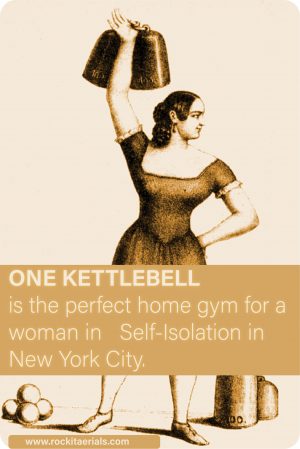
Woman with Kettlebell!
ONE KETTLEBELL IS THE PERFECT HOME GYM FOR A WOMAN IN SELF-ISOLATION IN NEW YORK CITY. HERE’S WHY:
I’m a big fan of working smart, not hard.
The Russian Kettlebell has been around since the 17thcentury and remains the ultimate tool for all-around fitness. Many people associate kettlebells with cross-fit training because kettlebells utilize power-lifting techniques like the snatch, clean and jerk but I assure you this is not an extreme sport. A kettlebell swing engages the entire body at once in a functional manner – working strength, cardiovascular sytem, and flexibility.
Back in 2004 when I was just starting out as a Pilates instructor, one of the fitness managers at a gym where I worked convinced me to sign up for the new kettlebell concepts kettlebell certification saying it would be great for my aerial arts as an effective core and grip training technique. Always one to avoid weight-training as a “really dull movement form”, I was dubious at first, but have sworn by them ever since that weekend.
Unlike a dumbbell where the weight is distributed evenly in your hand, a kettlebell puts the weight about 4 inches outside your hand which adds to the neuromuscular challenge of the swing.
On days when I can’t run due to weather or parks being closed during Covid-19 quarantine, I can do 3 sets of a double or single arm swing, 3 sets overhead push-press (with a deeper squat if I need more glute challenge) 30 or 40 Russian Twists, a few kettlebell assisted sit ups and some skull crushers for my triceps. Maybe 20 minutes and DONE. Add another 10 minutes to stretch and I feel great.
One tool to work your entire body, including lungs.
How do you choose what size?
Do you want bulk or do you want to scale down? Are you building muscle or prefer to burn muscle with cardio?
At a gym they will recommend the heaviest kettlebell you can handle because they want you to get the feeling of momentum: To initiate the kettlebell swing with the power of your legs rather than just lifting the kettlebell with your arms.
If you focus on thinking of the kettlebell as a wrecking ball that swings rather than something you lift straight up I believe you can figure this out on your own even with a lighter weight.
If you weigh under 150 and don’t want bulk, a 4kg kettlebell works wonders. If you are over 150 and have no current shoulder or back injuries 8Kg Kettlebell might be the way to go. You know your own body and what feels good.
One warm up to help get the feeling of pushing the weight up with your hips rather than lifting with your hands:
(A few ankle and knee circles as a warm-up always a good idea before any jump btw)
With your feet shoulder-width apart, do ten regular squats.
Next do ten squat jumps.
(A little disclaimer – some sites make squat jumps look really complicated and dangerous, other training sites would make you do 30 of them like they are no big deal. I believe they are somewhere in between – everyone knows how to jump – but be smart about it and if you have a hip, knee, or foot injury perhaps jumping isn’t the right exercise for you at this moment. Definitely be focused, and take a look in the mirror at where your feet and knees are placed before starting)
When you are doing your arm swings with the kettlebell, you want the feeling of that explosive movement in your thighs that comes with the squat jump. Abs should be engaged. Even though your feet will not be leaving the ground during a kettlebell swing, you want your hips to thrust forward quickly to initiate the swing.
There ya go. My two cents.
I recommend one or two personal online sessions just to get going and ensure you are using proper technique. After you have the basics you can easily do it on your own any time of day to a prerecorded video or in a group setting and you will LOVE the results!
MARCH 27, 2020
GROWING A HERB GARDEN FOR SANITY DURING SELF ISOLATION IN NEW YORK CITY
Why are herb gardens better than pets in NYC? They smell good, you don’t have to walk them every morning, and you can eat them!
I live alone in a one-bedroom apartment in one of the most densely populated areas of New York City by Madison Square Park .
As my apartment is right above the street, every day I am faced with car and pedestrian traffic, sirens, construction, and garbage trucks. Still, I chose to live in New York for the cultural benefits it offers and artistic inspiration it has given me. A couple years back after visiting a dear friend at her home in Oakland who has a beautiful magical garden complete with chickens, vegetables and even a beehive, my idea of a nice place to live began to shift. I had garden envy: I was used to buying plants fully grown and watching them slowly die but here she was growing plants from seeds and then eating them! It was an entirely new concept that I wanted to explore but was too insecure in my own natural survival capabilities to try.
All of that changed on February 28 after hearing from a relative in Japan that high schools across Tokyo were closing due to Covid-19 and the Olympics would likely be postponed. Suddenly my view shifted from Covid-19 being just a distant news story on television to a new global reality that effected each and every one of us and I knew for sure we were headed the same direction. Life would never be the same again. Preparing mentally for self-isolation, I started imagining what and whom my ideal future would contain.
While most people were stocking up on canned goods (a friend told me she ordered $500 worth for her 5-person family) my heart was going the opposite direction. It was a very warm winter and almost spring. I wanted something alive to nourish my body and mind. I ran to the farmers market and stocked up on every herb plant that I could find. Practical? Perhaps not, but it made me FEEL good.
My partner was Aussi and he had been very successful at growing herbs that he would add to every meal: rosemary to scrambled eggs in the morning, mint or cilantro (with a touch of lime juice) to add to avocado smash for toast, sage to butter and pasta, basil to tomatoes, thyme and rosemary to chicken – fresh herbs brought life to every meal or cocktail we shared and cutting them personally was very gratifying. He gave me a few tips that lead to my first herb growing success ever.
If you are like me and have tried but failed in the past to grow herbs – please read these recommendations and try again! NOW IS THE TIME – it’s spring in NYC.
Technically my apartment gets southern exposure, but only for a few hours a day as I am on a low floor and there is a tall building across the street. It’s sunny, but for limited amounts of time.
Invest in a big pot – at least 71/2”diameter, and Buy some organic soil. My biggest mistake at first was to keep the herbs in the original plastic pots. Home depot is very affordable and offers the best deals on basic ceramic pots and soil that I could find in the city – even living next to the garden district.
Buy a grow-light. You can put it in any desk lamp. I chose to use mine in the vanity of my bathroom so I could move plants in for a bit of warmth and humidity when it was cold outside. My basil plant was as sensitive to the cold as I was – getting all wilty on a cold night. If I moved it away from the window and into the bathroom with the grow-light it would spring back to life after only a couple of hours! Same with the cilantro.
Get some plant bulbs that deliver water when necessary. When I get busy or over-stressed I always forget to water my plants.
Add a bit of slow release fertilizer like Jobe’s Organic fertilizer for herbs.
Seeing my herbs flourish and cooking with herbs every meal has brought light to my soul more than anything during this time. I can’t recommend them highly enough.
The next challenge will be veggies!
A couple of great resources (besides my fabulous first-timer’s blog) are this article from Country Living
https://www.countryliving.com/gardening/garden-ideas/g19623922/indoor-vegetable-garden/
and City Homestead’s Article:
A Comprehensive Guide to Indoor Vegetable Gardening
Good luck to you and to all of us through this. Be well!
Love, Amanda

